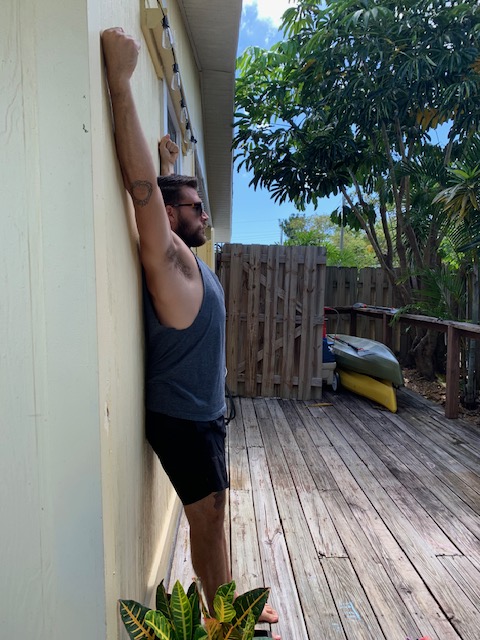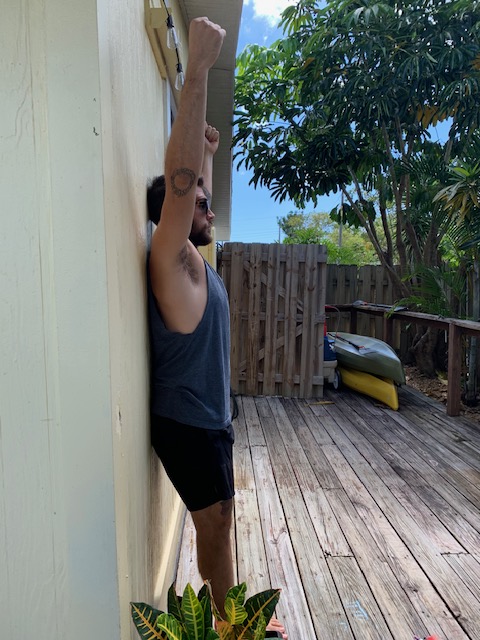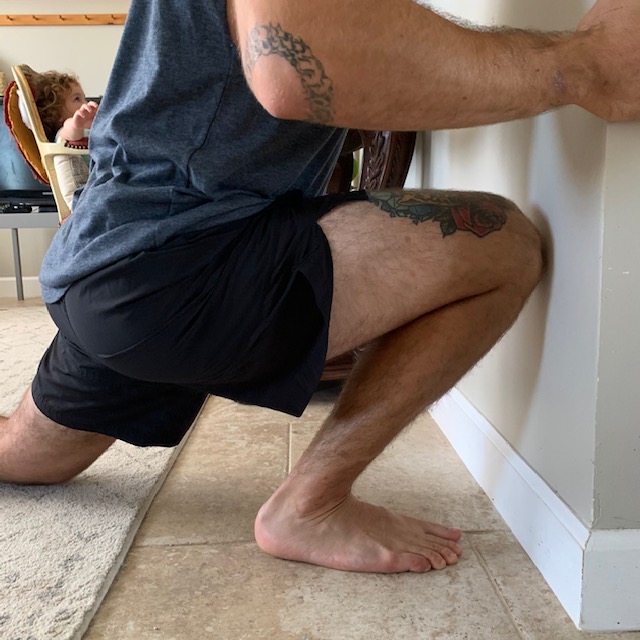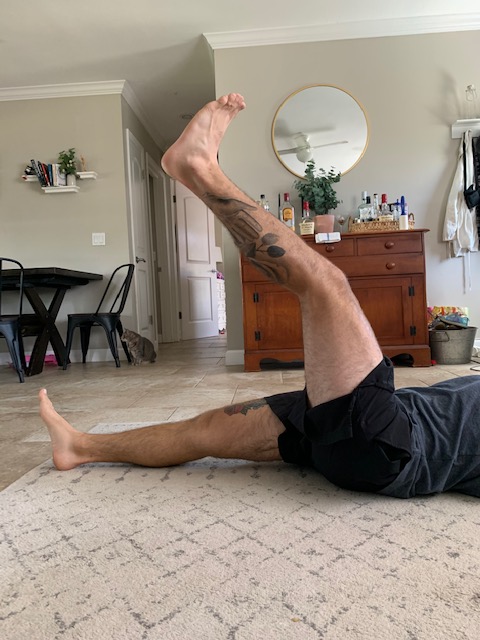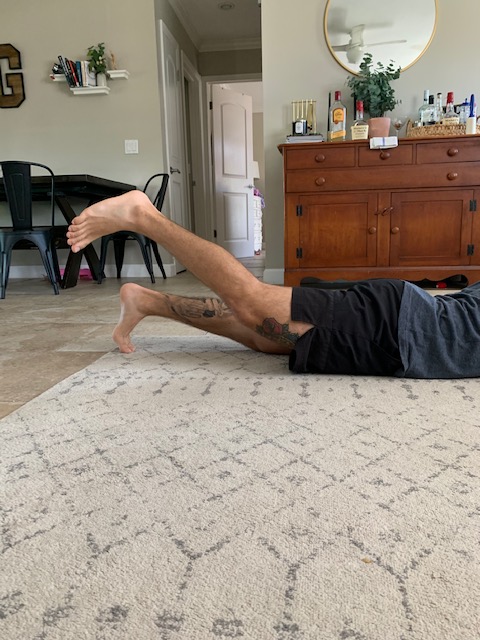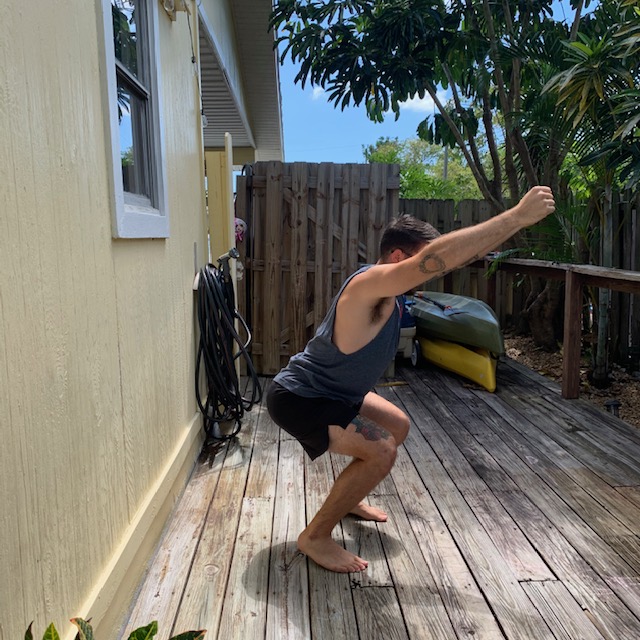Reading time: 6 minutes
You’ve spent all this time fantasizing about your gym; the weights, the accountability, your peers, the selfie lighting, the atmosphere. The time is coming, but should you just get back into it as usual?
No, but you can use this as an opportunity to start off on the right foot.
Don’t Be Silly
Don’t be that masochistic guy or gal that goes right into their usual routine, attempting the same weight, for the same reps, and same sets; it won’t be there.
The majority of us I’m speaking to and for have been making due (& been doing phenomenal, for the most part) with bodyweight variations, bands, and maybe a rusted dumbbell that’s been in their laundry room for seemingly a millennia.
Injuries can arise quickly as we crawl out from under our quarantine and thrust ourselves back into training, and that would certainly throw salt on the training wound. Treat your first week back as a ramp up week, meaning you’re essentially taking a deload from training, just before you jump into a training block, as opposed to after it.
Week 1 drop 1-2 sets off of all your exercises, for example let’s say you would do 5×5 squats, 4×8 bench, and 3×12 pulldowns, and 2 sets core and other accessories. Drop it down to 3×5 squats, 3×8 bench, 2×12 pulldowns, and 1 set core and accessories. In week 2, add one more set back into your training minus your accessories, so 4×5 squats, 4×8 bench, 3×12 pulldowns, and 1 set core and accessories. In the third week, you’re back to full volume, intelligently. The volume in the gym will likely account for more total weight than you’ve been using. There’s no need to brutalize your body with soreness for the first 1-2 weeks.
The Perfect Time to Track Metrics
If you do not measure it, you cannot (optimally) manage it.
Many folks do not diligently track their workouts, their nutrition, their weight, or their measurements. There is nothing wrong with that, if numbers make you neurotic, or take the joy out of your training it’s not worth it, BUT – if you’re ready to commit, this is the PERFECT time to start. You’re coming off a hiatus, you’re coming in relatively fresh to a new training phase essentially, and you’re most likely hankering to get back to it. (& if you’re not ready for the numbers yourself, or you need some help, hire a coach. It’s more than worth it.)
Tips for Your Return:
- Embark on a training plan featuring full-body, or upper/lower splits. (After some time off, it’s time to focus on training frequently, yet consistently, and with solid repetitions to regain your motor control.)
- Choose your training days, mark them on your calendar, commit.
- Write out your personal goals for end of year, and halfway between then and your gym-return date.
- Find an outlet of accountability. Involve your gym-buddy in your plans, get them to vocalize their goals as well.
- Create a page dedicated to your newly focused plan, post everything to do with it on that page separately to give you an outlet.
- Hire a coach; give business to your community and your local trainer and it may just be the catalyst for monumental change.
- Use this time to dial in your basic exercises of each movement category: push, pull, squat, hinge, lunge, carry (or core). Simple, yet adequately challenging exercises molded into intelligent workouts are how real results are built; don’t let fancy exercises or training plans fool you into believing otherwise.
- Focus on training intensities. Rather than being upset that the same weights, average times, or exercise variations aren’t at your best, train 1-3 reps shy of failure for resistance training, and train near max (but not maximal) effort and results will follow.
- Take a day to do some max testing. Rather then 1RM testing, test with 3RMs for strength specific compound movements, and 8RMs for accessories.
- If you’re new to logging workout info: begin by logging your workout date, session overview – e.g. “upper” or “full-body” and the main-focus movements of that session, or the most important movements of that day that you’re trying to progress. Progress to adding in weights used in those main lifts, and setsxreps. Eventually you can track all exercises, setsxreps, rests, and a marker for exertion for each exercise such as intensity. It can be incredibly gratifying to see your progress trend following the manipulation of these metrics. Another option (as mentioned above), is just train to 1-3 reps shy of failure, and log that info.
- If you’re interested in starting to learn how to track calories/macros: begin tracking calories first, then move to protein in grams and calories, and then move to tracking macros if possible.
Muscle Memory
Now you’ll have a perfect opportunity to geek out at how efficient the human body is.
Muscle memory is thought of as “I had muscles, I can get my muscles back quickly.” Which is essentially true, but what happens on a deeper level is you had to develop motor control and neuromuscular adaptations in order to simplify the process of “exercise, break down muscle, recover, grow” resulting in cultivation of muscle. Your body has efficiently internalized the process, meaning it doesn’t have to “relearn” the process repeatedly. I.e. once you’ve laid the foundation the rest of the assembly is simple.
With this being said, there is no need to bash yourself for having time off, nor is it an excuse to be reckless with training just to feel the satisfaction of exhaustion. You will be back to where you were in a matter of weeks, and this could serve as an opportunity to catapult you beyond some plateaus you’ve been lingering around.
Prioritize the Long Game
Would it feel better to lose the 9 pounds you gained in quarantine in 2 weeks, only to lose no more weight in the coming 3 months (because all you really gained was food bulk, some water, and carb storage and now you’re halted because you can’t sustain your training or intake) or to lose 15 pounds in the next 6 months slowly, sustainably, and in reality – easily, because strategy trumps all.
Assess Yourself With This Simple 5 Exercise Diagnostic
You may feel stiff, immobile, weak, or just completely forgetful of how your body should move. It’s been tough enough maintaining exercise, let alone mobility. Give this little assessment a go, record, and work on progressing in the coming weeks if need be.
Wall Press:
All Good/Needs Work:
Checking to see if your overhead mobility is on par with this test. Thoracic mobility is paramount for shoulder health, so if you’re failing this test, work on foam roller t-spine mobilizations, quadruped thoracic rotations, and dead hang breathing drills before you jump back into the deep end of overhead work.
Half Kneeling Ankle:
All Good/Needs Work:
If ankle mobility is compromised, your contact with the Earth is compromised (intense). This can result in knee, and hip compensation, leading to pain and injury. 3 way half kneeling ankle mobilizations, and band distraction calf stretches are the move. If you’re heel is rising on this test it’s likely your ankles are the culprit of that pesky knee pain, or your asymmetry in squatting.
Active Straight Leg Raise:
All Good/Needs Work:
This one can tell you a story. Take note: where do you feel “the stretch?” Hip or quad of the straight leg, or calf or hamstring of the working leg? Where you feel it, is the tight spot. If you’re struggling, work on calf and hamstring mobilizations of the working leg, and hip/quad mobilizations of the down leg.
This test is actually multifold, because it takes significant stability and bracing to maintain tension throughout both legs, while keeping your pelvis stable. This test is generally quite asymmetrical on folks, meaning one leg is the clear hindrance. This test highlights how most people perform the hinging pattern (deadlifts, rdls) in the gym from a bilateral stance, yet during activities of daily life they perform it off of one dominant leg, causing imbalance. (Do more unilateral exercises in training.)
Prone Hip Extension:
All Good/Needs Work:
Overlooked, but a valid test to see if you can separate your hip extension, from lumbar extension. You should focus on the posterior pelvic tilt, and then squeeze the glute and quad of the down leg to get that leg off the ground. If you have to arch your back to do so, focus on pelvic control and core strength, and mobilizing the working hip. If there’s one muscle you need to have a psychic connection with, it would be your glutes. If you’re having trouble getting the leg up without arching, work on half kneeling hip mobilizations with a glute squeeze, birddogs, and quadruped glute extensions.
This can highlight faults causing low back pain. Don’t sacrifice pelvic position for, well, anything really.
Overhead Squat:
All Good/Needs Work:
The “tell-all’ assessment. This is a total body checkpoint to assess the joints in unison. All that’s needed for this one is to squat to parallel. Look out for knee valgus (knees bowing in), arms bending and falling forward, lumbar arching, and your heels coming up, feet turning out, or pronating.
If you have trouble really pinpointing any movement faults from the prior exercises, this can highlight some potential faults dynamically. Film yourself to check for symmetry, which will likely be skewed to a side. Again, showing the importance of unilateral training.
Thanks for Reading!
The gym has missed you, return with a vengeance.
Reach out for anything if you need clarification, or have any questions at all!
-Coach Cody
Free Bonus:
Click here for a FREE educational 6 week total body training program, and metric tracker!
I want to have everyone going back to the gym intelligently, and priming themselves for the results they truly want. In this program, I not only give you just that, I also teach you how to do it yourself. To save, and begin editing your own copy, go to file>make a copy, and begin your process. Reach out for ANYTHING.

